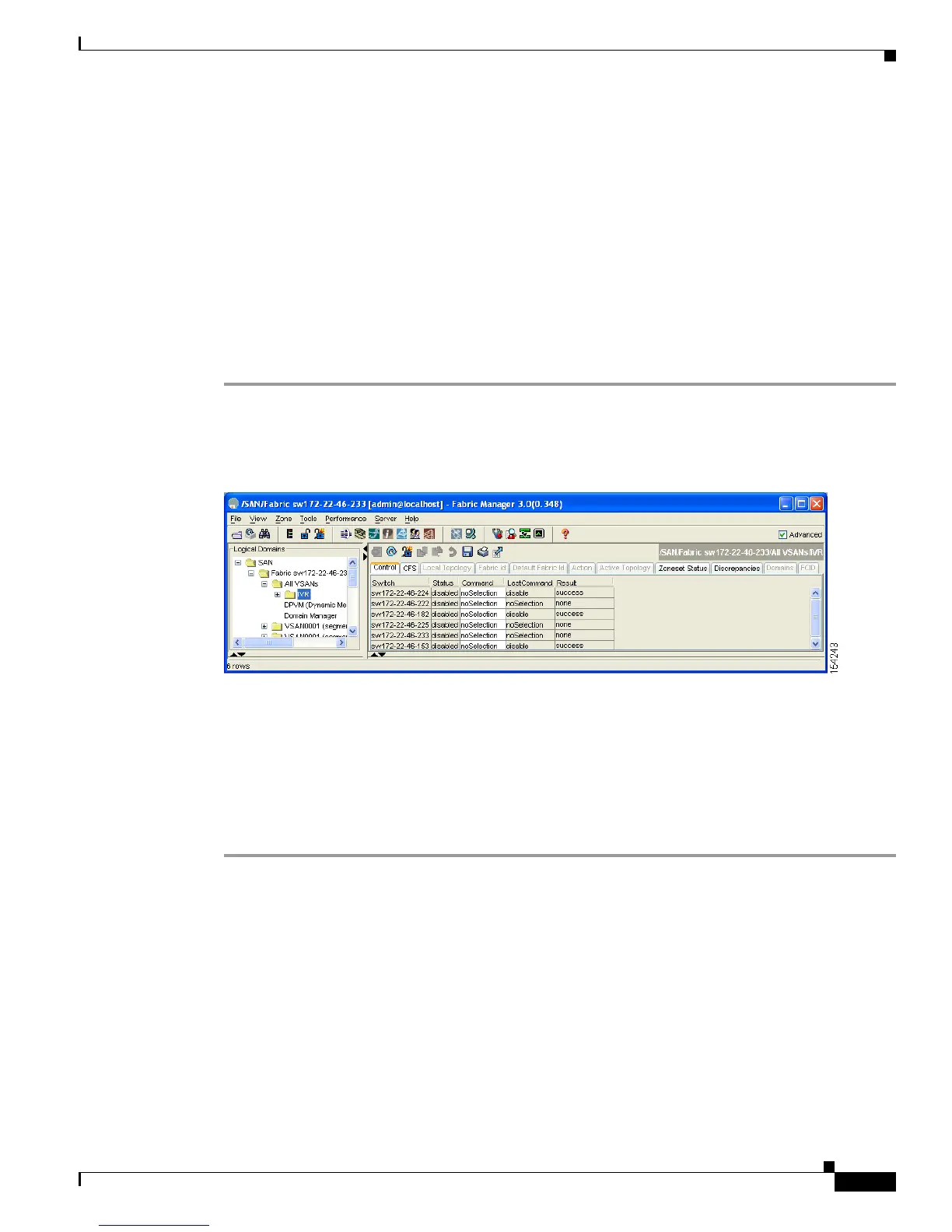Send documentation comments to mdsfeedback-doc@cisco.com
29-11
Cisco MDS 9000 Family Fabric Manager Configuration Guide
OL-17256-03, Cisco MDS NX-OS Release 4.x
Chapter 29 Configuring Inter-VSAN Routing
Manual IVR Configuration
• Border switches require Cisco MDS SAN-OS Release 2.1(1a) or later.
• A border switch must be a member of two or more VSANs.
• A border switch that facilities IVR communications must be IVR enabled.
• IVR can (optionally) be enabled on additional border switches to provide redundant paths between
active IVR zone members.
The VSAN topology configuration updates automatically when a border switch is added or removed.
Configuring IVR NAT and IVR Auto Topology
To configure IVR in NAT mode and IVR topology in auto mode from Fabric Manager, follow these steps:
Step 1 Expand All VSANs and then select IVR in the Logical Domains pane.
You see the inter-VSAN routing configuration in the Information pane shown in Figure 29-4.
Figure 29-4 IVR Routing Configuration Control Tab
Step 2 Select enable from the Admin column drop-down menu for the primary switch.
Step 3 Click the Apply Changes icon to distribute this change to all switches in the fabric.
Step 4 Click the Action tab.
Step 5 Check the Enable IVR NAT check box to enable IVR in NAT mode.
Step 6 Check the Auto Discover Topology check box to enable IVR topology in auto mode.
Step 7 Click the Apply Changes icon to enable IVR on the switches.
About AFIDs
You can configure AFIDs individually for VSANs, or you can set the default AFIDs for all VSANs on
a switch. If you configure an individual AFID for a subset of the VSANs on a switch that has a default
AFID, that subset uses the configured AFID while all other VSANs on that switch use the default AFID.
IVR supports a maximum of 64 AFIDs.

